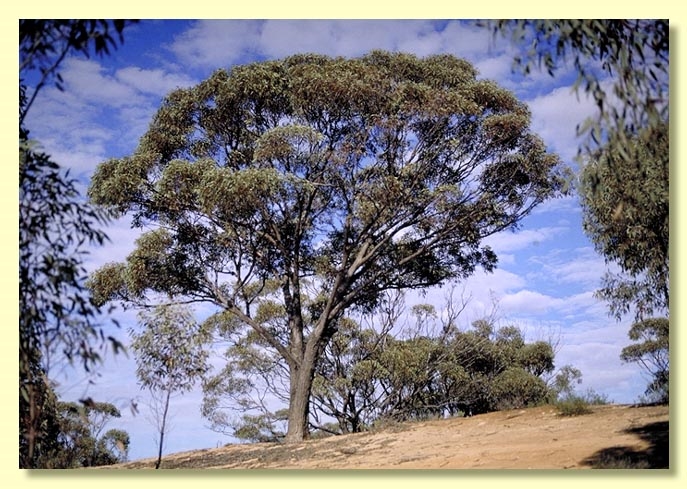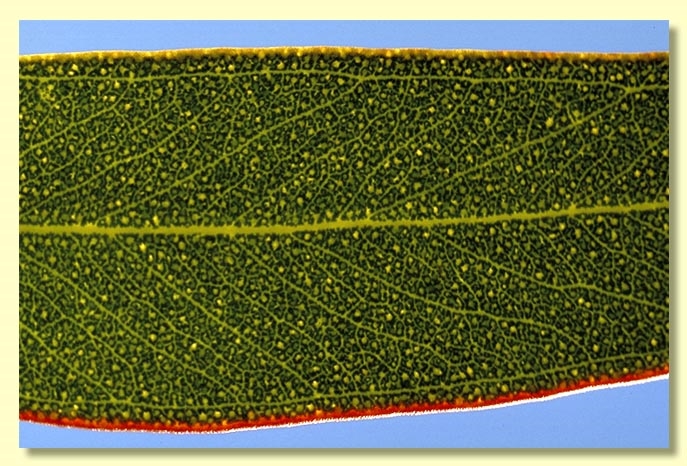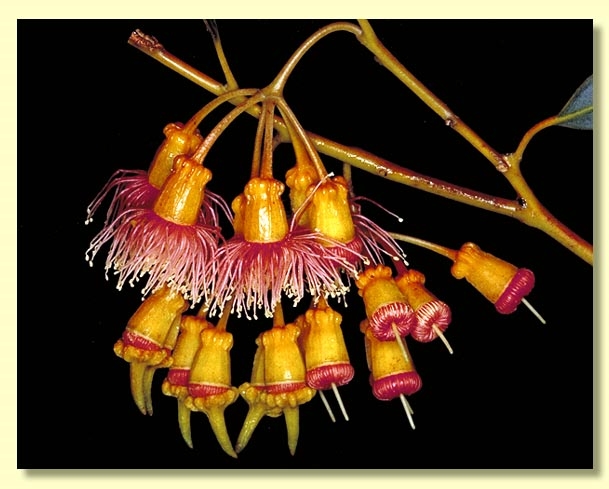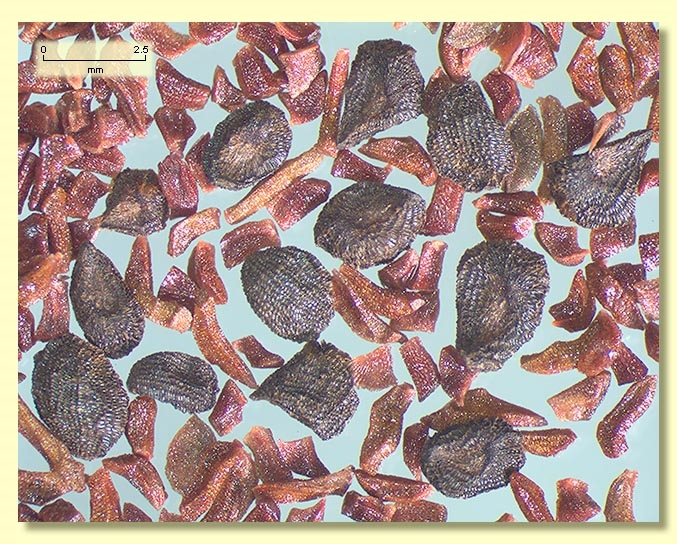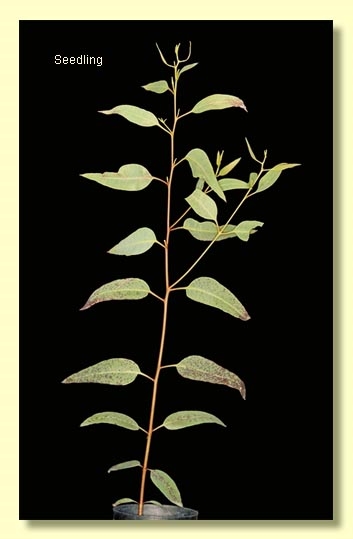Euclid - Online edition
Eucalyptus torquata
Eucalyptus | Symphyomyrtus | Dumaria | Torquatae
Bark rough, hard, dark grey to blackish, shortly fissured to almost tessellated, over most or all of trunk, branches smooth, various shades of dark grey to black.
Branchlets with conspicuous dark oil glands in pith.
Juvenile growth (coppice or field seedlings to 50 cm tall): stems rounded in cross-section; juvenile leaves always petiolate, alternate, lanceolate, 4.5–12 cm long, 1.2–2.5 cm wide, dull, grey-green.
Adult leaves alternate, petioles 1.5–2.7 cm long; blade lanceolate to falcate, 8–11.5 cm long, 1.3–2 cm wide, base tapering to petiole, margin entire, apex pointed, concolorous, dull, grey-green to blue-green, side-veins at an acute or wider angle to midrib, reticulation dense to very dense, intramarginal vein fairly close to margin, oil glands numerous, intersectional.
Inflorescence axillary unbranched, pendulous, peduncles 1.3–4 cm long, buds 7, with long slender pedicels, 0.8–2.5 cm long. Mature buds cylindrical but with dilated and ribbed bases to both hypanthium and operculum (1.8–3 cm long, 0.7–1.2 cm wide), scar present, operculum with curved beak (0.8–2 cm long), stamens inflexed, anthers oblong to wedge-shaped, versatile, dorsifixed, dehiscing by longitudinal slits, style long and straight, stigma blunt to tapered, locules 4 or 5, the placentae each with 4 vertical rows of ovules. Flowers pink and creamy white.
Fruit pendulous, long-pedicellate, pedicels 1–2 cm long, cylindrical with ribbed base, 1–1.6 cm long, 0.9–1.2 cm wide, disc descending vertically, valves 4 or 5, enclosed.
Seeds brown to blackish, 1.8–3 mm long, ovoid or flattened-ovoid, dorsal surface honeycombed with moderately deep to shallow pits, hilum ventral.
Cultivated seedlings (measured at ca node 10): cotyledons reniform; stems rounded in cross-section; leaves always petiolate, opposite for 3 or 4 nodes then alternate, lanceolate, 4.5–9.5 cm long, 1.2–2.5 cm wide, dull, green.
Flowering has been recorded in May, August, September, October, November and December.
It is a favourite municipal and domestic ornamental in the Australian arid zone, often hybridising in cultivation with another commonly grown arid zone species, E. woodwardii. Seed from cultivated specimens of either species may therefore not be true to parental type in circumstances where the parents were grown together. E. torquata is an abundant nectar producer and is of value to apiarists.
A small tree endemic to Western Australia, restricted to the central and southern goldfields, extending from Coolgardie to east of Kalgoorlie and south to Norseman. The bark is rough and hard, adult leaves grey-green and buds have a characteristic J-shaped beak.
Eucalyptus torquata belongs in Eucalyptus subgenus Symphyomyrtus section Dumaria because the buds have two opercula initially, stamens are strongly inflexed, ovules are in four rows on the placentae and cotyledons are reniform. Within this section E. torquata is somewhat isolated from other species by having pendulous umbels of cylindrical buds that are only basally ribbed, hooked operculum, usually pink staminal filaments and seed only moderately pitted at best. Its characteristic grey-black rough-barked trunk and grey-green to bluish green crown make it easy to recognize in its home range.

